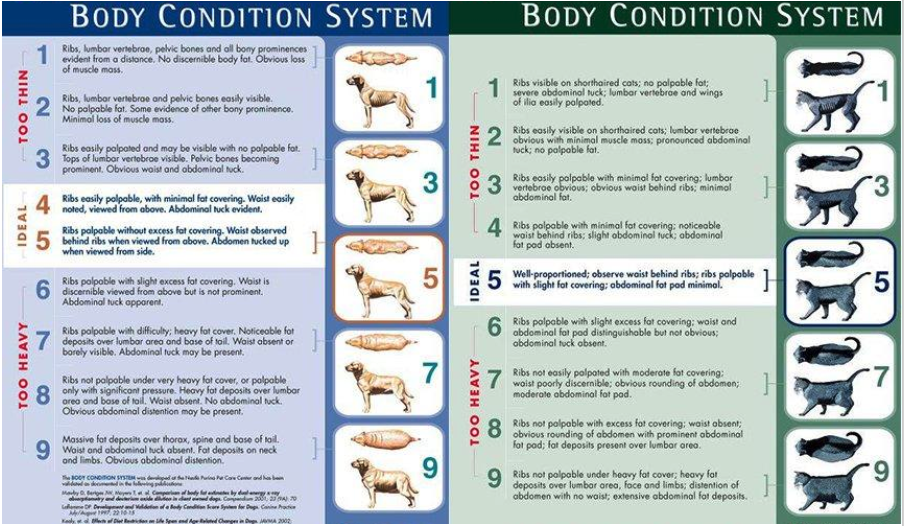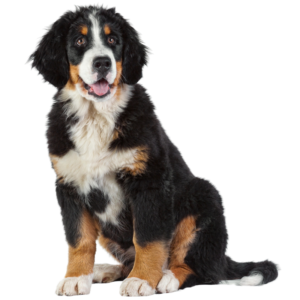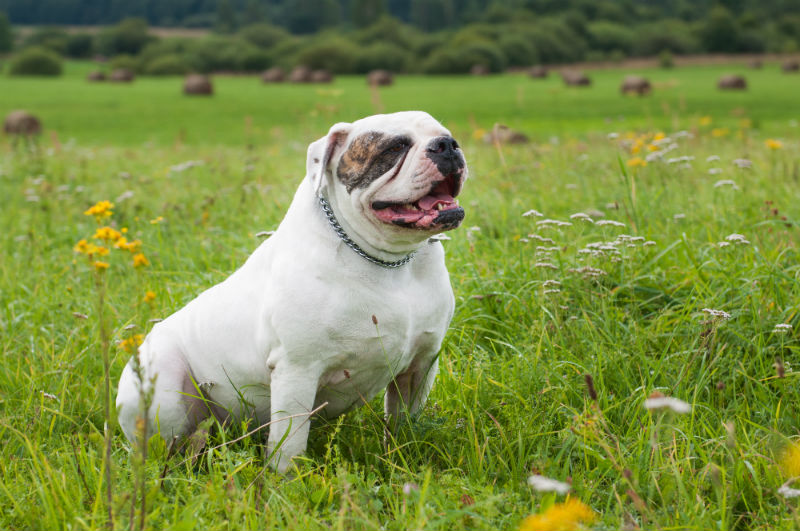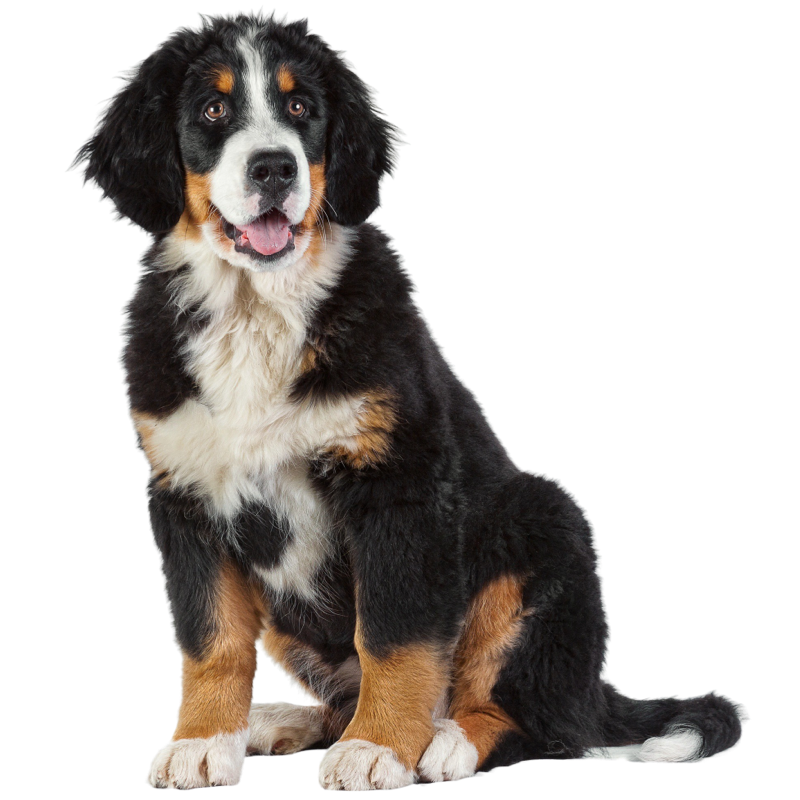In veterinary medicine, we do not deem a pet healthy based on their weight, due to the various breeds that differ in body shape and size. It would be unfair to compare a Boston Terrier to a Cocker Spaniel based on weight, as they are similar in size, but their body types are completely different.
Instead, how we judge if your pet is a healthy size is by a body condition score. This is a score out of 9 with one being underweight, nine being overweight and five being ideal. The way a veterinarian determines the score to give your pet is by feeling your pet along the spine, ribs, abdomen and legs to determine fat coverage. They also assess visually by observing if any bones are visible or if they have a visible waist. Each number higher or lower from ideal represents a 10% difference. For example, a score of 8/9 means your pet is 30% overweight.
Where does your pet fit? Use the chart below to determine your pets score:

Why is it important to know my pet’s body condition score?
Once we have determined the body condition score of your pet, we can assess how over or underweight they are and determine their ideal weight if needed. For example, a score of 8/9 means your pet is 30% overweight. By taking your pet’s weight and multiplying it by 30% and subtracting that from their current weight, we can figure out your pet’s ideal weight.
How many calories should I feed my pet?
With your pet’s ideal weight, we can use this to figure out how many calories your pet requires per day to perform essential bodily functions like digestion and respiration. This is called the resting energy requirement (RER).
The RER is then multiplied by a factor to estimate your pet’s total daily energy needs. The factor we multiply the RER by varies depending on the growth stage of your pet if your pet is overweight vs. underweight and the activity level of your pet. An adult cat will require fewer calories compared to a kitten who is growing, which will need a greater number of calories to support their growth.
Now that I have the calories, how do I figure out the amount to feed?
On pet food bags and cans, the number of calories in either a cup or per can should be listed. From here, you can figure out how much to feed your pet. Do not forget about treats, table scraps or dental chews as these all count towards your pets’ calories!
My pet food has a guideline that tells me how much to feed, can I use this?
I do not recommend using this guideline because this is not individualized to your specific pet and what they need to help them maintain a healthy weight based on their body condition and their activity level. By using this guideline for your pet, it could cause them to be under or overweight.
Written by Dr. Cara Page, DVM




